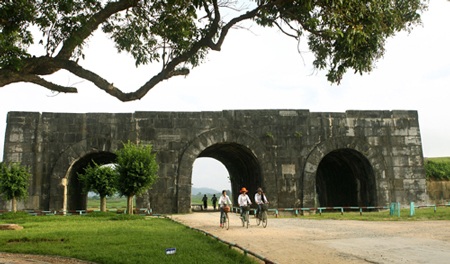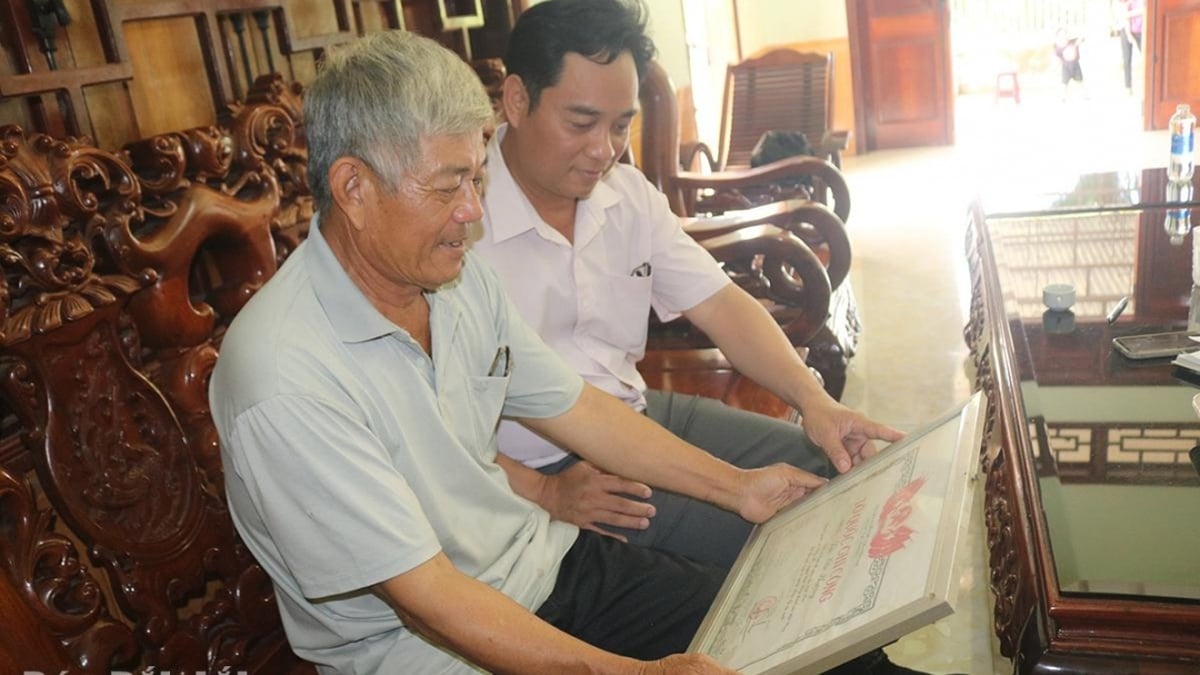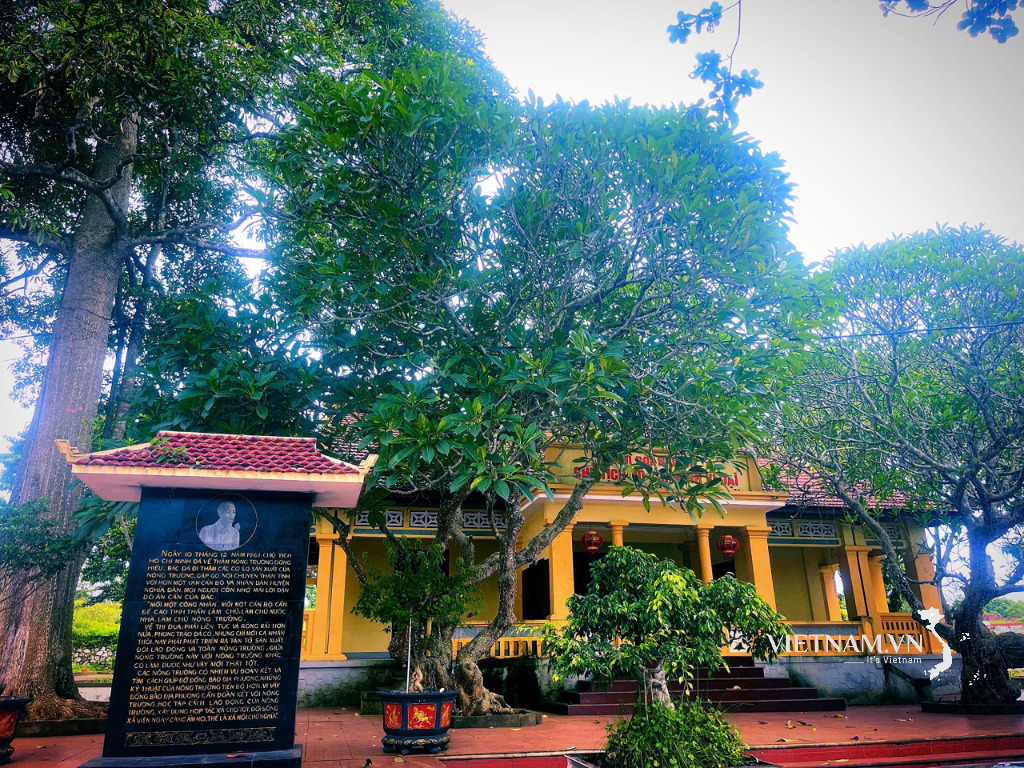The Ho Dynasty Citadel - a magnificent work of engineering and large stone construction art is considered an "unprecedented" breakthrough phenomenon in the history of citadel architecture in Vietnam and the region.
With the beautiful landscape value of an ancient capital, on June 27, 2011, in Paris (France), during the 35th session of the World Heritage Committee, UNESCO recognized the Ho Dynasty Citadel as a World Cultural Heritage. The Ho Dynasty Citadel was once considered the political , economic, cultural and social center of our country. Although it only existed for a short period of 7 years (1400-1407) under the Ho Dynasty, the Ho Dynasty Citadel was perfectly built as a symbol of royal power combined with divine power, demonstrating the skillful connection between architectural works and cultural and natural landscapes.
The South Gate - the largest and most beautiful of the four gates of the Ho Dynasty Citadel, with the middle gate 8m high and 5.8m wide and the two side gates 7.8m high and 5m wide. Photo: VNA
Ho Dynasty Citadel is located in Vinh Long and Vinh Tien communes, Vinh Loc district, Thanh Hoa province, also known as An Ton citadel, Tay Do citadel, Tay Giai citadel or Tay Kinh citadel. The citadel was built by Ho Quy Ly in 1397. In February of Canh Thin year, Ho Quy Ly ascended the throne and established the Ho Dynasty, naming the country Dai Ngu (1400-1407) and Tay Do as the capital. From the unique stone architecture, Ho Dynasty Citadel was built on a rather rugged terrain, surrounded by rivers and mountains, creating a great advantage in defense. The architecture of the citadel was built very uniquely, with the principle of combining stone on the outside and earth on the inside. Similar to Dai La citadel and Thang Long Imperial Citadel, the citadel includes an inner citadel and an outer citadel. The outer citadel was built with earth with a volume of nearly 100,000 m3, planted with bamboo and a moat, with a surface of nearly 50m surrounding it. The inner citadel and the outer citadel are rectangular, the two South - North sides are longer than 900m, the East - West sides are longer than 700m, the wall is on average 7 - 8m high.
The East Gate of the Ho Dynasty Citadel with its massive stone dome. Photo: Anh Tuan/VNA
In particular, the Ho Dynasty Citadel demonstrates a high level of technical expertise in stone arch construction. The exterior of the citadel is joined together with stone blocks measuring 2m x 1m x 0.7m on average. Inside the citadel, there are blocks weighing 10 to 20 tons that were lifted high and joined together without adhesives. After more than 600 years, the stone walls are still almost intact. Surprisingly, such a massive and solid architectural work was built in only 3 months. Half a century ago, the French architect L. Bezacier once admired: "The Ho Dynasty Citadel is one of the most beautiful works of Annamese architecture!". Coming to the World Cultural Heritage With the beautiful landscape value of an ancient capital, on June 27, 2011, the Ho Dynasty Citadel was recognized by UNESCO as a World Cultural Heritage with outstanding values, affirming the tangible and intangible cultural values of our nation. The declaration of outstanding global value clearly states: The Ho Dynasty Citadel Heritage Site was the center of the capital of Vietnam in the late 14th century - early 15th century; the political, economic and cultural center of the North Central region of Vietnam from the 16th to the 18th century. The Ho Dynasty Citadel includes a stone citadel built with large stone blocks. The successive underground cultural layers preserve the vestiges of palaces, temples, roads and decorative arts, ancient villages and the entire landscape of hills, rivers and lakes with typical feng shui that are still relatively intact, clearly reflecting a period of Vietnamese cultural and civilized history with regional and international characteristics.
Ceremony to receive the certificate of recognition of the Ho Dynasty Citadel as World Cultural Heritage on the evening of June 16, 2012. Photo: Thanh Tung-VNA
The Ho Dynasty Citadel is a structure with oriental imperial architecture, both a center of power and a military fortress. The heritage is a magnificent work due to the technique and art of large stone construction and the combination of unique construction traditions that are unique in Vietnam, East Asia and Southeast Asia in the late 14th and early 15th centuries. Thanks to the unique construction technique, the use of sustainable materials, especially large stone blocks that are almost intact, this is one of the few imperial citadel relics that have not been affected much by the urbanization process, and are still preserved almost intact both above ground and underground. In order for the heritage to increasingly attract domestic and international tourists, Thanh Hoa province has been and is continuing to conduct in-depth research on the Ho Dynasty Citadel relic and neighboring relics in many fields: history, culture, architecture, archeology, and landscape. Thanh Hoa has a plan to invest adequately in the heritage, both in terms of funding and innovation in management, conservation and promotion of the heritage's value. That is, it will continue to invest in tourism infrastructure, increase promotion, and connect Ho Dynasty Citadel tours with domestic, foreign and international tourist destinations. Source: https://dantri.com.vn/du-lich/toa-thanh-da-doc-nhat-vo-nhi-tai-viet-nam-1404514175.htm


























![[Photo] National Assembly Chairman attends the seminar "Building and operating an international financial center and recommendations for Vietnam"](https://vphoto.vietnam.vn/thumb/1200x675/vietnam/resource/IMAGE/2025/7/28/76393436936e457db31ec84433289f72)








































































Comment (0)